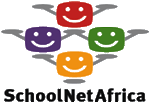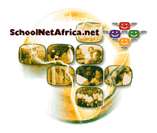E-readiness Assessment reports
E-readiness reports will provide a range of information that will help you to create and implement sustainable e-readiness strategies. Some specific kinds of information would be for example, definitions of e-readiness, the goal and results of assessment tools, and how these results could be used in practice.
Several reports that document the findings from E-readiness assessments have been compiled and provide useful examples of how E-readiness can be assessed. We have included a variety of such reports in this section. These are reports that have been produced by various institutions and researchers on Benchmarks and Indicators to date.
Technical Lessons Learned from the Design, Development, and Implementation of a College of Education Accreditation Web Site
The National Council for the Accreditation of Teacher Education (NCATE, 2000) set the integration of technology as a priority for teacher education institutions. This paper presents a brief perspective on how institutions can prepare for a NCATE/State accreditation visit, reasons for implementing an on-line electronic accreditation web site, and development of a team. It also addresses the lessons learned during the yearlong preparation and development of the ISU College of Education's NCATE and State accreditation web site. [1101]
http://ejite.isu.edu/Volume1No1/Zimmerly.html
technology_lessons_learned.pdf
Visual Literacy in Teaching and Learning: A Literature Perspective
This report provides an introduction to visual literacy and includes a review of studies that investigate the effects of instruction that incorporates varying degrees of visual components including no visual support, still visual aids, and animated visual sequences. The purpose of this literature review is to stimulate interest in using visual enhancements in teaching and to promote the development of learners’ visual skills in combination with their development of verbal, reading, and mathematical skills. [1100]
http://ejite.isu.edu/Volume1No1/Stokes.html
visual_literacy_in_t__l.pdf
Public Schools and University Partnerships: Problems and Possibilities
The report describes the integration of technology between two education institutions, the role of the public school, and the role of the university. Ways of making technology partnerships stronger and more useful to both the university and the public schools is also covered in the report. The report highlights the importance of communication, support, timing, and training to a successful technology partnership [1099]
http://ejite.isu.edu/Volume1No1/Patterson.html
PublicandUPartnerships.pdf
How Students Learn New Technologies
This is an American report that addresses the way in which high school juniors and seniors acquire technology skills and how best to present new technologies to students in this age group. An examination of what motivates students to learn new technologies is also included. [1098]
http://ejite.isu.edu/Volume1No2/Hocutt.htm
students_learn_new_tech.pdf
Internet Access in US Public Schools 1994-2001
This report, focusing on the US public schools system, presents statistics and data on Internet access, including school connectivity and student access stats. [1097]
http://nces.ed.gov/pubsearch/pubsinfo.asp?pubid=2002018
Internet___schools.USA.pdf
National Survey of ICTs in South African Schools
Charting the progress of ICT integration into school systems in South Africa, this document looks at the methodology behind the national survey, analysing current conditions to make estimations for the future of modern schooling. [1096]
http://education.pwv.gov.za/teli2/research/ICT audit/ICTaduit.htm
Spanning the Digital Divide: Understanding and Tackling the Issues
This report is an adaptation of the Bridges.org report, the most detailed and comprehensive report focusing explicitly on the nature of the digital divide, quantitative and qualitative measures of the divide, corporate/donor/NGO approaches to overcoming the divide, project lessons, and policy alignment recommendations. Review by Madanmohan Rao [1095]
http://www.apdip.net/news/headlines/26092001_bridges.htm
Measuring the diffusion of ICT and its impact
This site contains numerous papers dealing with the diffusion of ICT and its impact; measurements of effects of productivity improvements caused by ICT; development of ICT indicators, statistics on e-Commerce; statistics on the diffusion of ICT in society and its effects; etc. [1094]
http://www.stat.go.jp/english/iaos/paperdl.htm
Connecting with the Unconnected: Proposing an Evaluation of the Impacts of the Internet on Unconnected Rural Stakeholders
Acting as a framework for evaluating the impact of non-governmental organizations (NGOs) with Internet connectivity on rural communities, this paper attempts to address the shortcomings of previous ICT evaluations. The position of rural stakeholders is analysed, leading to a call for a refocusing of ICT research on the communication processes occurring with the use of the Internet, rather than on the infrastructural components themselves. [1093]
http://www.devmedia.org/documents/4(7)%20Evaluation%20
(Scott%20McConnel).htm
SADC World Economic Forum Report on E-readiness. Global Digital Initiative Steering Committee on Policies and Strategies. 2001/2002.
This report presents an overview of E-readiness in SADC countries, together with recommendations of concrete actions that could be taken to improve e-readiness. An overview of the path to achieving e-readiness as well as best practices for achieving e-readiness are presented. [1091]
WEF-NEPAD_ereadiness_prog_rpt_final_7_Jan_2003_WEF_edit.pdf
SADC E-Readiness Review and Strategy – Recommendations for the SADC E-readiness Task Force
Written in June 2002, this report presents the results and recommendations of a strategy process for improving the overall E-readiness of the SADC region. [1090]
SADC_report_01.pdf
Readiness for the Networked
A Guide for Developing Countries [1040]
Readiness_for_the_Networked_World_Downloads.pdf


